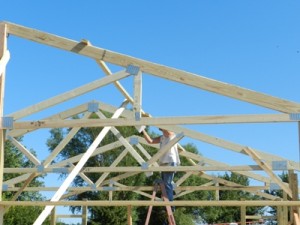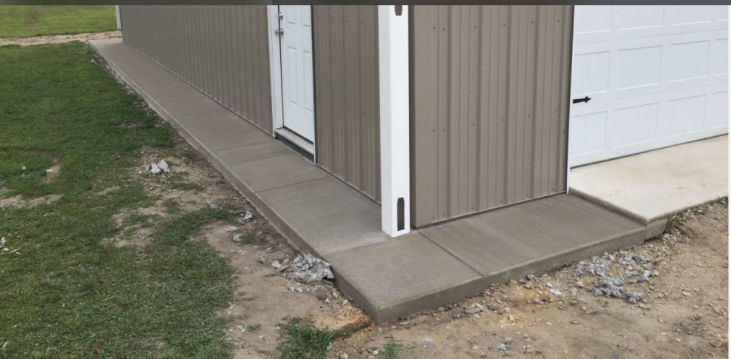Don’t Cut Trusses!
In regards to cutting trusses, an excerpt from the NDS® (National Design Specification for Lumber®) is quoted in the Hansen Pole Buildings’ Construction Manual:
“Cutting and altering of trusses is not permitted. If any truss should become broken, damaged, or altered, written concurrence and approval by a licensed design professional is required.”
 This is some important stuff, which some folks might not take as seriously as they should. So serious, the truss manufacturers include the warning with the materials given to whomever receives the trusses at the building site.
This is some important stuff, which some folks might not take as seriously as they should. So serious, the truss manufacturers include the warning with the materials given to whomever receives the trusses at the building site.
But what if it is just a small piece, like an internal truss web?
It is only a 2×4, or in some cases even a 2×3. It can’t possibly make a difference, right?
There is no redundancy in a roof truss, and as such, it is significantly compromised if any of its members are cut or damaged. Unfortunately, it is common to see trusses which have had webs and chords cut to accommodate attic access, skylights, or HVAC ductwork. A few cut trusses, spaced two foot on center, don’t necessarily lead to catastrophic roof failure, because the roof acts like a large diaphragm and because partition walls (if any) below usually pick up some of the roof loads. However, the deflection which can occur when truss members are incorrectly altered can be substantial, which can lead to damage of interior finishes and materials.
For example, where the deflection potential of the bottom chord in a complete truss is less than ¼ inch, with a cut web the deflection potential jumps to more than seven inches!
When it comes to post frame (pole) building construction with widely spaced trusses anywhere from four to fourteen foot on center or more (read more on pole building truss spacing here: https://www.hansenpolebuildings.com/2011/06/pole-barn-truss-spacing/), if a single truss is compromised, it is very possible some or all of the roof system will collapse, often with catastrophic results.
In the event a truss is received damaged on a jobsite, is damaged on the jobsite, or is altered – do not just assume it will be okay. Contact the truss manufacturer or a registered professional engineer for an engineered field repair.








